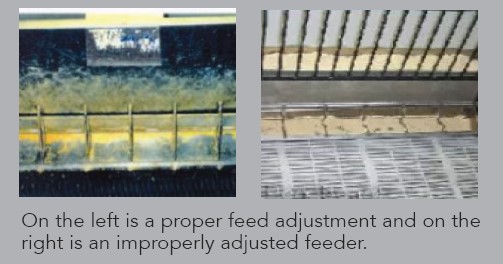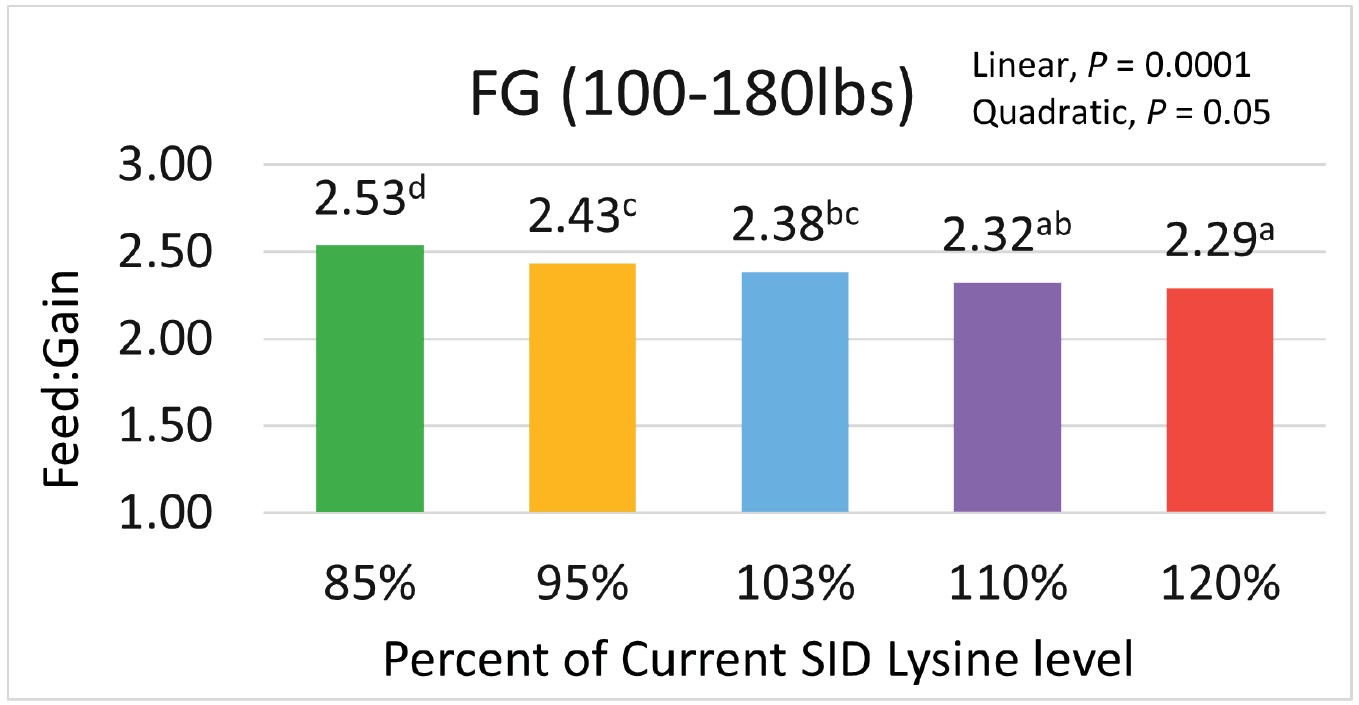 There are three drivers influencing cost of production today; facilities, weaned pigs and feed, with feed cost accounting for over 60% of the total cost of production. In the last 90 days, we have seen feed cost per pig increase >$20/pig. Now more than ever, producers should be focused on improving feed efficiency as a tool to reduce feed cost/pig. Feed efficiency is typically measured by feed consumed per unit of gain and has a major effect on producers’ profitability with its strong association with feed costs. There are many factors that can affect feed efficiency, a few of those include feed quality, barn management, diet formulation and health.
There are three drivers influencing cost of production today; facilities, weaned pigs and feed, with feed cost accounting for over 60% of the total cost of production. In the last 90 days, we have seen feed cost per pig increase >$20/pig. Now more than ever, producers should be focused on improving feed efficiency as a tool to reduce feed cost/pig. Feed efficiency is typically measured by feed consumed per unit of gain and has a major effect on producers’ profitability with its strong association with feed costs. There are many factors that can affect feed efficiency, a few of those include feed quality, barn management, diet formulation and health.
Feed Quality
Particle size reduction has a big impact on feed efficiency. Reduction in particle size of feed ingredients, corn in particular, increases the surface area of the grain and improves digestibility. Typically feed efficiency improves by 1% for every 100 micron reduction in particle size. However, too fine of a grind can increase feed processing cost, and reduce feed flow-ability which can cause out-of-feed events and an increased chance of gastric ulcers.
Feed Adjustment
One important on-farm factor that can be controlled by producers is feeder adjustment. Feed wastage has a large impact on feed cost and feed efficiency. It’s recommended to have 60% pan coverage in the nursery and 40% pan coverage in the finisher, without feed accumulating in the corners.
Diet Formulation
In years where corn and soybean prices are high, feed cost is amplified. Typically feeding other feed by-products (DDGs, corn germ, soybean hulls, or bakery) can help mitigate feed cost. However, these alternative feedstuffs are generally lower in energy which is associated with poorer feed efficiency. Increasing dietary energy (fat) can improve feed efficiency, however it is associated with increased feed cost. Margin over feed cost (MOFC) is best to evaluate when considering diet changes as it provides a more complete picture on overall profit.
Advances in genetic selection make it important to continue to evaluate amino acid ratios to maximize lean growth and improve feed cost. Diets deficient in lysine, the first-limiting amino acid, can have a negative impact on feed efficiency. Recent trials completed within PIPESTONE’s commercial research facility have found that in 100-180lb growing pigs feed efficiency was 2% to 5% worse when feeding diets deficient in Lysine (graph below).
Health
Pig health has a big impact on almost all aspects of swine productivity and is an important factor affecting feed conversion outside of nutritional influence. Disease challenged pigs are not able to utilize nutrients for growth, but instead allocate energy to fight disease. In general, for every 1% increase in mortality, feed efficiency will be reduced by 0.5% to 0.8%.
There are many factors that affect feed efficiency in production systems. These strategies to improve feed efficiency should always be evaluated against the ability to execute, and the effects on production system profitability. Understanding these impacts will help guide producers in decision making.
By: Emily Scholtz Research Coordinator, Pipestone Nutrition


